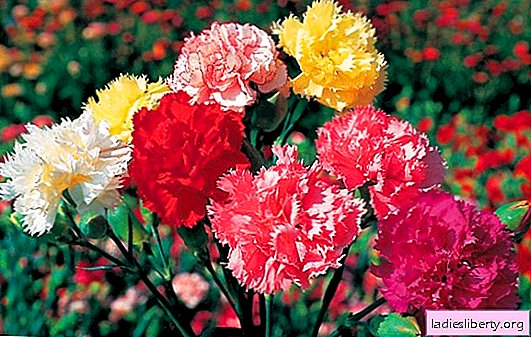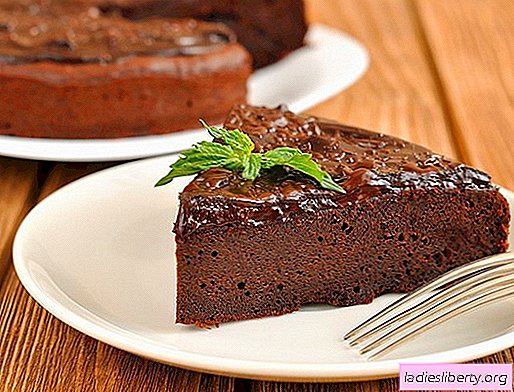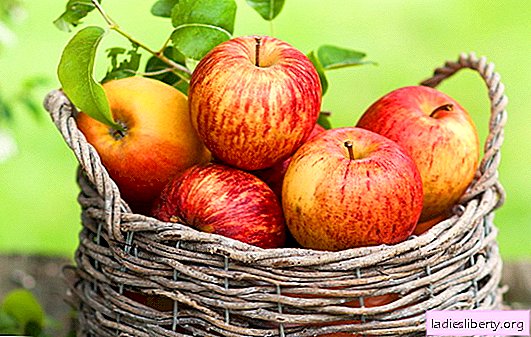
Carnation Shabo - a perennial plant with large flowers of various colors. In a cold climate, cloves are cultivated as an annual plant. Terry flowers of varietal cloves Shabo are used to make bouquets, they well retain freshness after cutting and have a strong aroma of the same name spice. Hybrids of the F1 group are used for landscaping flower beds and flower beds, as well as for composing various landscape compositions.
Ways to grow Shabo seedlings
They grow cloves Shabo, mainly in seedlings. Seeds are sown in cassettes or other seedling containers. At the same time, they are buried in the soil by 2 mm. Sowing seeds is carried out in January. If you sow cloves in March-April, the plants will bloom much later.
To ensure high germination of seeds, they are germinated in a mini-greenhouse on a multi-layer paper towel, and then planted in the ground. This method is used to ensure sterility of seedlings at the initial stage of growth.
Sowing Shabo clove seeds in cassettes

Cloves Shabo in cassettes
The first method of growing seedlings is sowing seeds in soil cassettes. At the same time, fertile soil with neutral acidity is selected for their germination.
Although it is better to use sandy or sandy soil when planting Shabo cloves in open ground, at the stage of growing seedlings, a soil mixture is prepared consisting of:
· From 50% of the land from acacia or any other soil with neutral acidity;
15% vermiculite or perlite;
· 15% calcined river sand;
· 20% rotted cow manure.
Before sowing Shabo cloves, the soil is slightly moistened. In each cell of the cartridge there should be no more than four seeds. They are closed to a depth of 2 mm or laid out on the surface of the soil. Seeds must be dry during sowing.
The cassette is covered with plastic wrap until “loops” appear, and then put in a well-lit place.
Mini greenhouse
When seeds are germinated hydroponically, their germination is 80% -100%. A mini greenhouse is made from a plastic container with a transparent lid. As the basis for the formation of the root system, use:
Multilayer toilet paper;
· Paper napkins;
Sterile cotton.
The material is laid on the bottom of the container. The thickness of the base should be 2-5 mm. Then the paper is well spilled with hot water, the temperature of which is 70 ° C. Water that has not absorbed into the base for five seconds is drained.
Important! As a basis for a mini-greenhouse, it is undesirable to use gauze. Also, one-layer gray toilet paper, which contributes to the development of fungal diseases, cannot be placed in a container.
When the paper has cooled to a temperature of 30-40 ° C, the seeds are placed in a container. They are laid out in rows on a warm base at a distance of about 0.5 cm from each other.
The container with seeds is wrapped with a transparent cling film so that the base cools down more slowly. In this case, the greenhouse effect arises in the tank. Mini-greenhouse is placed on the windowsill.
In winter, daylight hours are short, so additional illumination is arranged on the windowsill. As a backlight, a fluorescent lamp or an ordinary incandescent lamp with a white spectrum of luminescence is used.
In a container, clove Shabo sprouts from 7 to 10 days. Seedlings are transplanted into cassettes with soil after the appearance of cotyledon leaves. The root system of plants should be white.

For transplanting the germinated seeds from the mini-greenhouse into the cassettes, a soil mixture is prepared from similar components that are used in the first method of growing Shabo clove seedlings.
Important! The soil is sprayed with a warm, slightly pink solution of potassium permanganate or the drug "Fitosporin-M" from the spray for the prevention of the "black leg" and other fungal diseases.
Seedling Care
An important biological feature of Shabo cloves is slow development. The plant will be ready for flowering in 6-8 months after sowing seeds.
The growth of green mass and the formation of buds can be accelerated by 1-2 months due to the proper care of Shabo cloves at the seedling stage.
Picking, feeding and pinching
20 days after the emergence of seedlings, the seedlings are transplanted into a larger container to build up the root system. When planting a Shabo clove in another container, the earthen lump is slightly destroyed. Thus, they stimulate the growth of lateral roots.
Top dressing is carried out 4-5 days after the plant takes root. At this stage of seedling growth, it is fed with fertilizer with a high content of phosphorus. This macronutrient contributes to the development of a strong fibrous root system.
Then, after one to two weeks, the seedlings are fed with nitrogen fertilizers to accelerate further growth and increase the vegetative mass. Top dressing with nitrogen-containing fertilizers is carried out no more than once a week until the appearance of the third or fourth pair of true leaves.
After the appearance of the fourth pair of real leaves, pinch the seedlings, removing the growth point above the second or third pair. This contributes to the formation of side shoots.

After pinching, the clove grows in the container for another two weeks. During this time, the roots will occupy the entire volume of the container, and the plant will well transfer the transplant to the open ground. Planting cloves Shabo is usually carried out in late April - early May.
Soil preparation for planting Shabo cloves in open ground
Seedlings are transplanted to a sunny, sheltered from the wind place. If you plant clove Shabo at partial shade, then flowering will be sparse.
The plant loves sandy and sandy neutral or slightly alkaline soils. In slightly acidic soil, cloves Shabo does not form buds well. Less petals are formed on the flowers, and the plant looks oppressed.
When preparing the soil mixture for planting Shabo cloves in open ground, use:
· 40% sand;
· 30% rotted cow manure;
· 20% of the soil from the garden;
10% vermiculite.
If the soil in the plot is slightly acidic or acidic, wood ash or dolomite flour is added to the soil mixture.
Outdoor Shabo Carnation Guidelines
During the formation of buds, in late May - early June, Shabo clove is fed two to three times with magnesium-containing and potassium fertilizers with an interval of 10 days. This increases the number of flowers on the plant.
During flowering, feeding is stopped. Intensive top dressing during this period contributes to the withering of flowers and the fall of the petals. Fertilize the plant continues in the event that Shabo clove is grown for seeds.

A week before the start of flowering, small buds are removed. They consume nutrients and reduce the flowering time of cloves.
You can remove the side shoots, which will contribute to the influx of nutrients to the central peduncle. Pruning is carried out if flowers are grown for cutting. Five to ten flowers are left on each plant.
Although clove Shabo is a perennial, in cold climates it is cultivated as an annual. The plant can be left for the second year, covered with agrofiber, only in the southern regions.
In order to preserve the plant in winter, it is transplanted into a pot and brought into a room with an air temperature of 15-18 ° C. Cloves are moderately watered.

The next year, Shabo clove is propagated by cuttings. To do this, use side shoots. They take root easily in water and quickly form a fibrous root system. After root formation, cuttings are planted in open ground.











